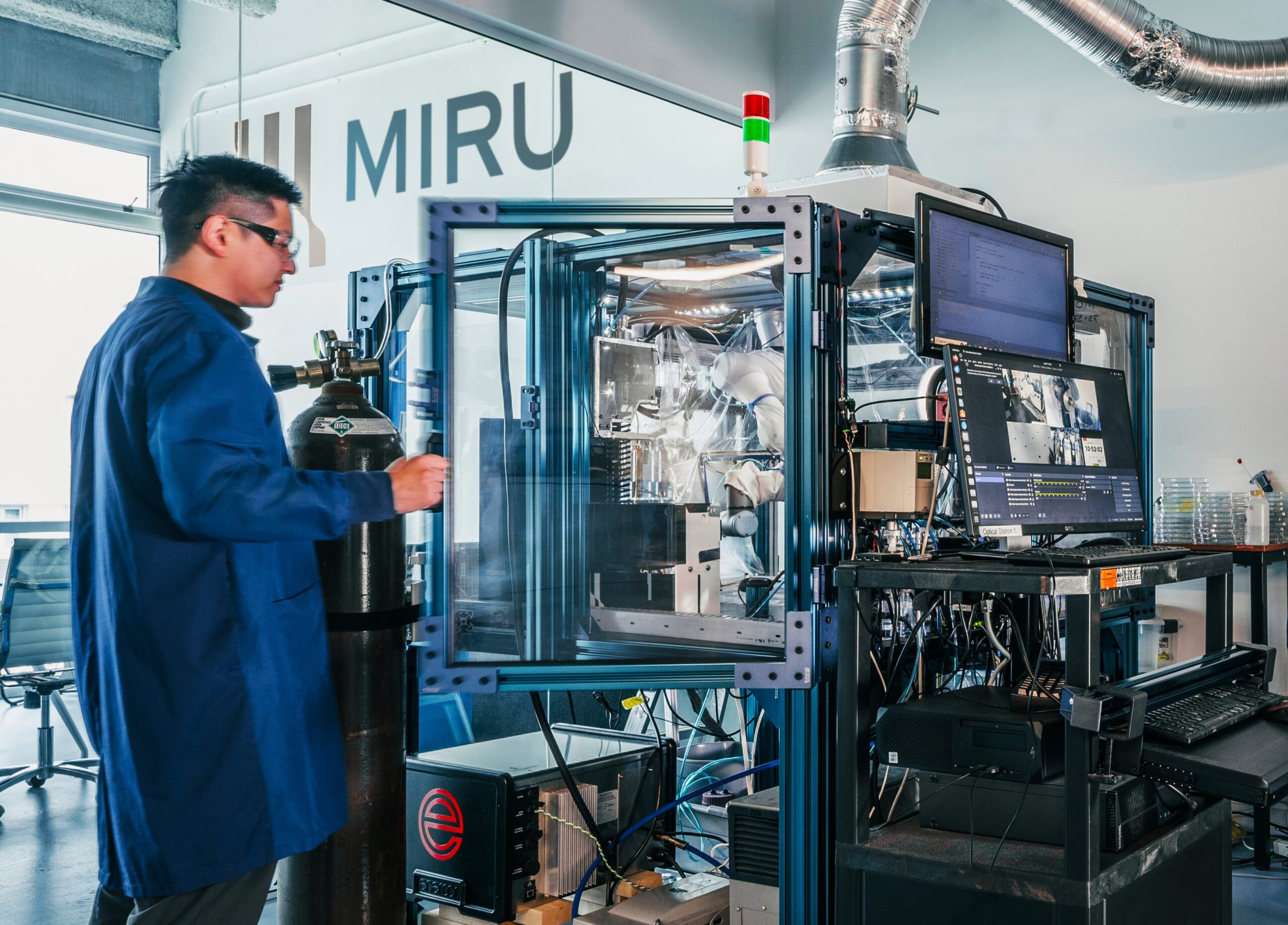At Miru, innovation is not just about what comes out of our lab – it is how we make the discovery itself faster, smarter, and more scalable. That is where “Adam”, our groundbreaking AI-driven robot scientist, or self-driving lab, comes in.
Adam is accelerating how we discover and refine the advanced materials behind Miru’s dynamic electrochromic window (“eWindow”) technology. Electrochromic materials may look simple in action – tiny pulses of electricity tinting a window – but they involve millions of variables and years of iteration. Traditionally, it would take decades to move from breakthrough to market.
We decided to accelerate that timeline.
In 2018, our CEO, Curtis Berlinguette, and his team at the University of British Columbia built “Ada”, the world’s first fully autonomous self-driving labs. In collaboration with Jason Hein and Alan Aspuru-Guzik, and backed by an $8 million grant from Natural Resources Canada, Ada could mix, cast, process, test, and analyze materials – and then instantly adjust and repeat. What once took nine months could be compressed into five days.
Adam is the first generation of self-driving labs being used in the materials industry.
(“Ada” was named after Ada Lovelace; “Adam”, is the Ada-Miru iteration.)
Faster, more powerful, and always learning, Adam runs complex experiments continuously and with frequent microadjustments, freeing Miru engineers and scientists to focus on insights and strategy. Together, human ingenuity and AI speed are pushing the boundaries of what is possible in electrochromic technology.
The result: Miru is uncovering better materials at a record pace – developing smarter, more sustainable eWindows for cars, homes, and buildings around the world.
Miru’s mission is to enhance the well-being of people and the planet. Adam is one more way we are building that future, today.
—
Read more here:
- Globe and Mail
- Science Magazine
- Related concepts featured in The New York Times
